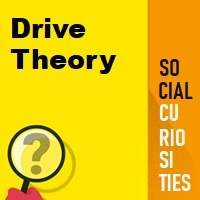
Drive Theory Implications
Drive theory combines motivation, learning, reinforcement, and habit formation to explain and predict human behavior. It is a theory that attempts to analyze, classify or define the psychological drives, a drive is an instinctual need that has the power of driving the behavior of a person.
This theory is based on the principle that organisms are born with certain psychological needs and that a negative state of tension is created when these needs are not satisfied. When a need is satisfied, drive is reduced and the organism returns to a state of homeostasis and relaxation.
According to the theory, drive tends to increase over time and operates on a feedback control system, much like a thermostat.
Drive theory is important in understanding habit formation as a result of learning and reinforcement. For instance, to alter bad habits, such as drug use (which can be seen as a way to reduce the drive for euphoria), an understanding of how habits are created is essential; drive theory offers this insight.
Thus, Drive Theory cannot be explained in isolation. While Freud was correct in saying that our body strives to satisfy our urges, he did not take the broader social and environmental situation into context.
Indeed, it is the social and environmental surroundings which shape our needs and wants.
The drive reduction theory of motivation
The theory was created by behaviorist Clark Hull and further developed by his collaborator Kenneth Spence. According to the theory, the reduction of drives is the primary force behind motivation.
Hull was one of the first theorists to attempt to create a grand theory designed to explain all behavior. He started developing his theory shortly after he began working at Yale University, drawing on ideas from a number of other thinkers including Charles Darwin, Ivan Pavlov, John. B. Watson, and Edward L. Thorndike.
Hull based his theory on the concept of homeostasis, the idea that the body actively works to maintain a certain state of balance or equilibrium. For example, your body regulates its temperature in order to ensure that you don’t become too hot or too cold.
Hull believed that behavior was one of the ways that an organism maintains this balance.
Based on this idea, Hull suggested that all motivation arises as a result of these biological needs. In his theory, Hull used the term drive to refer to the state of tension or arousal caused by biological or physiological needs.
Thirst, hunger, and the need for warmth are all examples of drives. A drive creates an unpleasant state, a tension that needs to be reduced.
In order to reduce this state of tension, humans and animals seek out ways to fulfill these biological needs. We get a drink when we are thirsty or we eat when we are hungry.
He suggested that humans and animals will then repeat any behavior that reduces these drives.


